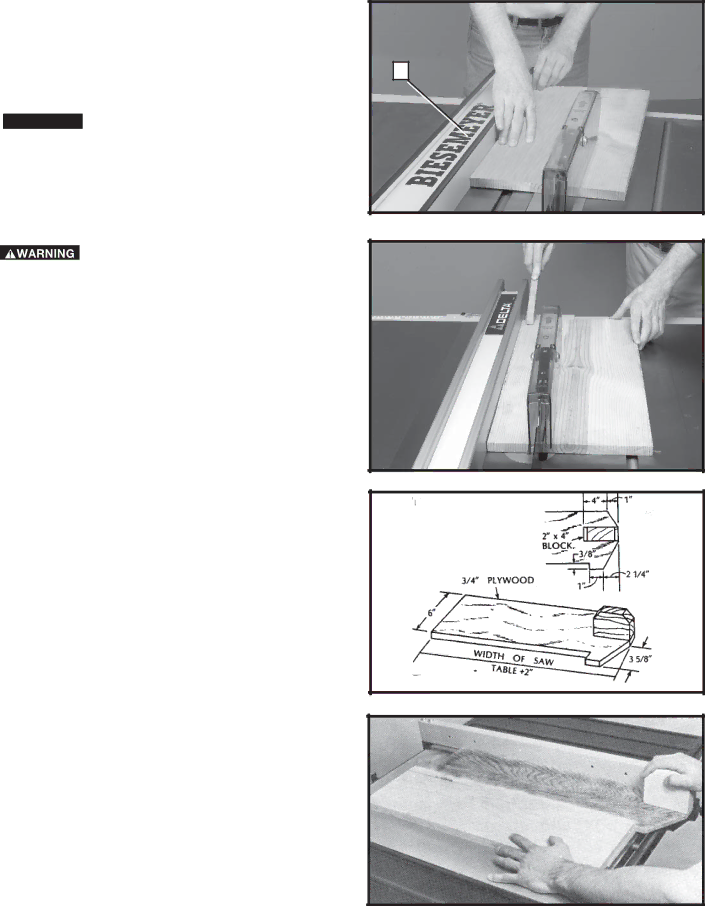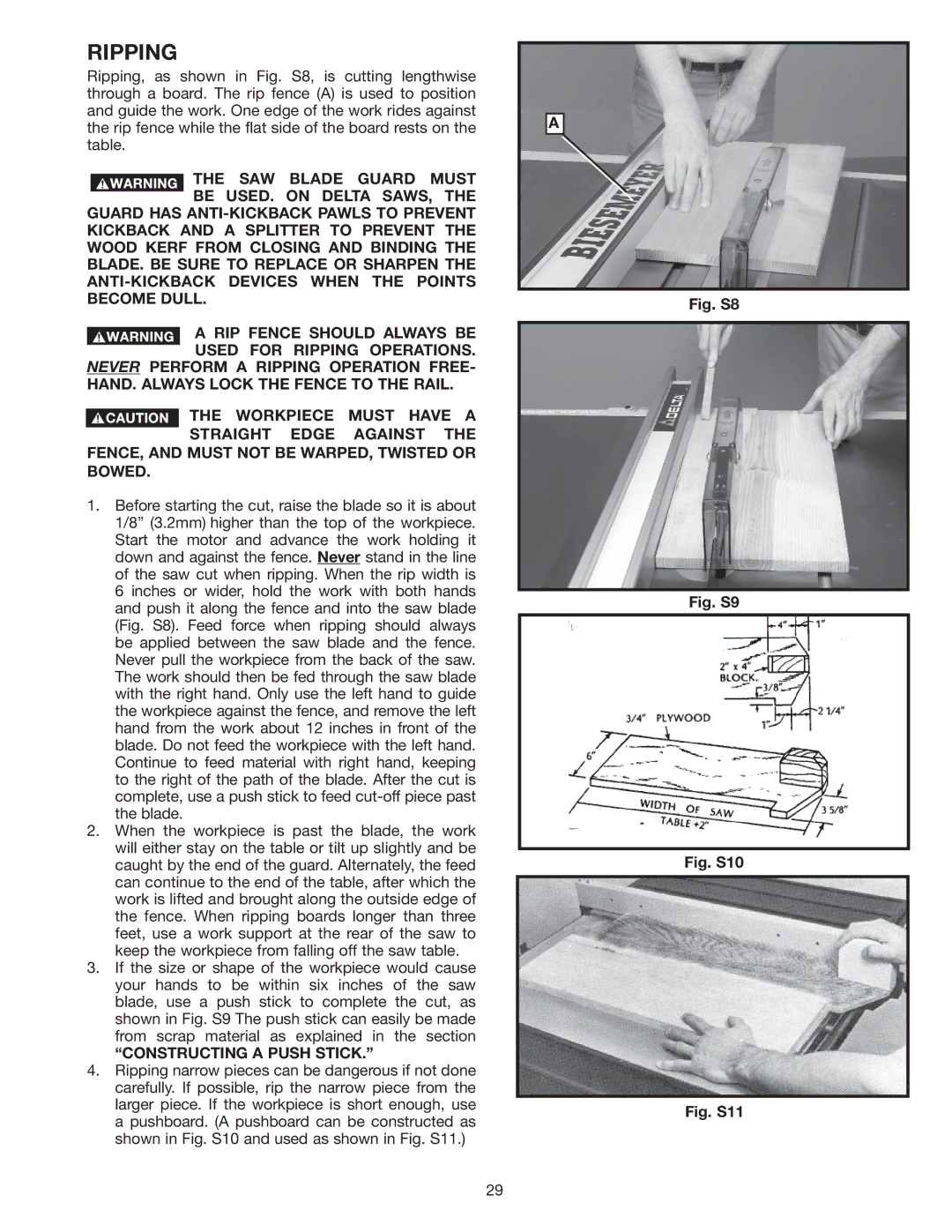
RIPPING
Ripping, as shown in Fig. S8, is cutting lengthwise through a board. The rip fence (A) is used to position and guide the work. One edge of the work rides against the rip fence while the flat side of the board rests on the table.
![]()
![]()
![]()
![]()
![]() THE SAW BLADE GUARD MUST BE USED. ON DELTA SAWS, THE GUARD HAS
THE SAW BLADE GUARD MUST BE USED. ON DELTA SAWS, THE GUARD HAS
KICKBACK AND A SPLITTER TO PREVENT THE WOOD KERF FROM CLOSING AND BINDING THE BLADE. BE SURE TO REPLACE OR SHARPEN THE
A RIP FENCE SHOULD ALWAYS BE USED FOR RIPPING OPERATIONS.
NEVER PERFORM A RIPPING OPERATION FREE- HAND. ALWAYS LOCK THE FENCE TO THE RAIL.
![]() THE WORKPIECE MUST HAVE A STRAIGHT EDGE AGAINST THE FENCE, AND MUST NOT BE WARPED, TWISTED OR
THE WORKPIECE MUST HAVE A STRAIGHT EDGE AGAINST THE FENCE, AND MUST NOT BE WARPED, TWISTED OR
BOWED.
1.Before starting the cut, raise the blade so it is about 1/8” (3.2mm) higher than the top of the workpiece. Start the motor and advance the work holding it down and against the fence. Never stand in the line of the saw cut when ripping. When the rip width is 6 inches or wider, hold the work with both hands and push it along the fence and into the saw blade (Fig. S8). Feed force when ripping should always be applied between the saw blade and the fence. Never pull the workpiece from the back of the saw. The work should then be fed through the saw blade with the right hand. Only use the left hand to guide the workpiece against the fence, and remove the left hand from the work about 12 inches in front of the blade. Do not feed the workpiece with the left hand. Continue to feed material with right hand, keeping to the right of the path of the blade. After the cut is complete, use a push stick to feed
2.When the workpiece is past the blade, the work will either stay on the table or tilt up slightly and be caught by the end of the guard. Alternately, the feed can continue to the end of the table, after which the work is lifted and brought along the outside edge of the fence. When ripping boards longer than three feet, use a work support at the rear of the saw to keep the workpiece from falling off the saw table.
3.If the size or shape of the workpiece would cause your hands to be within six inches of the saw blade, use a push stick to complete the cut, as shown in Fig. S9 The push stick can easily be made from scrap material as explained in the section
“CONSTRUCTING A PUSH STICK.”
4.Ripping narrow pieces can be dangerous if not done carefully. If possible, rip the narrow piece from the larger piece. If the workpiece is short enough, use a pushboard. (A pushboard can be constructed as shown in Fig. S10 and used as shown in Fig. S11.)
A
Fig. S8
Fig. S9
Fig. S10
Fig. S11
29
